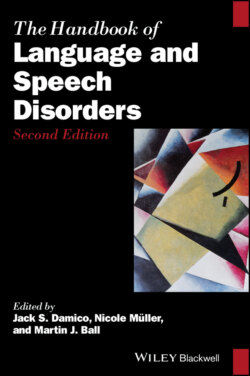Читать книгу The Handbook of Language and Speech Disorders - Группа авторов - Страница 43
3.2.3 Hearing Loss and the Individual
ОглавлениеIn considering hearing loss and the individual, let us turn to one of the greatest individuals, who is arguably also the greatest Romantic composer of all time. Ludwig van Beethoven (1770–1827) was such an individualist that he broke with the tradition of indenture, which was servitude to the aristocracy. In doing so he became the first composer of Western music who was able to make a living essentially as a freelance artist. He was also plagued by hearing loss, with onset at the age of approximately 26, a perilous condition for one whose livelihood revolved around creating music. His 1802 unsent letter to his brother, what has come to be called the Heiligenstadt Testament, offers a unique view into the inner world of one who suffered due to their hearing loss:
Oh I cannot do it; therefore forgive me when you see me draw back when I would have gladly mingled with you. My misfortune is doubly painful to me because I am bound to be misunderstood; for me there can be no relaxation with my fellow men, no refined conversations, no mutual exchange of ideas.
It is evident that at this stage Beethoven has given up on coping strategies and withdrawn into himself. He also admits that his hearing loss encroaches on his ability to participate in community and also to articulate and respond to abstract thought. Or in the terminology of the International Classification of Functioning, Disability and Health Core Sets (World Health Organization [WHO], 2019), Beethoven articulates a disability which is both an activity limitation and a participation restriction. He goes on:
I must live almost alone, like one who has been banished; I can mix with society only as much as true necessity demands. If I approach near to people a hot terror seizes upon me, and I fear being exposed to the danger that my condition might be noticed.
This fear of exposure is the stigma of hearing loss; that more than wrinkles and gray hair (or lack of hair), hearing loss, when disclosed, is an outer signal that the body is aging. This attests to our individual vanity, but also indicates that the stigma of hearing loss penetrates our collective conscious. An example of this can be found in the Nepalese cultural belief that to accept food from a deaf person is to accept bad karma and thus open oneself to spiritual pollution (Hoffmann‐Dilloway, 2016). While of course unfounded, this folklore demonstrates that the stigma of hearing loss encompasses a broader sense than the merely personal. The stigma of hearing loss is the stigma of being identified as a member of the hearing‐impaired other, an association that implies at least a deficiency in communicative ability, and possibly an associated cognitive impairment.
Had Beethoven been alive today, and, of course, depending on the diagnosis and type of his hearing loss, he may have been a candidate for cochlear implantation. CIs may have been helpful for his communication needs, but it is unlikely that he would have been wholly satisfied with his implants due to the poor cuing of pitch that many CI recipients experience.
